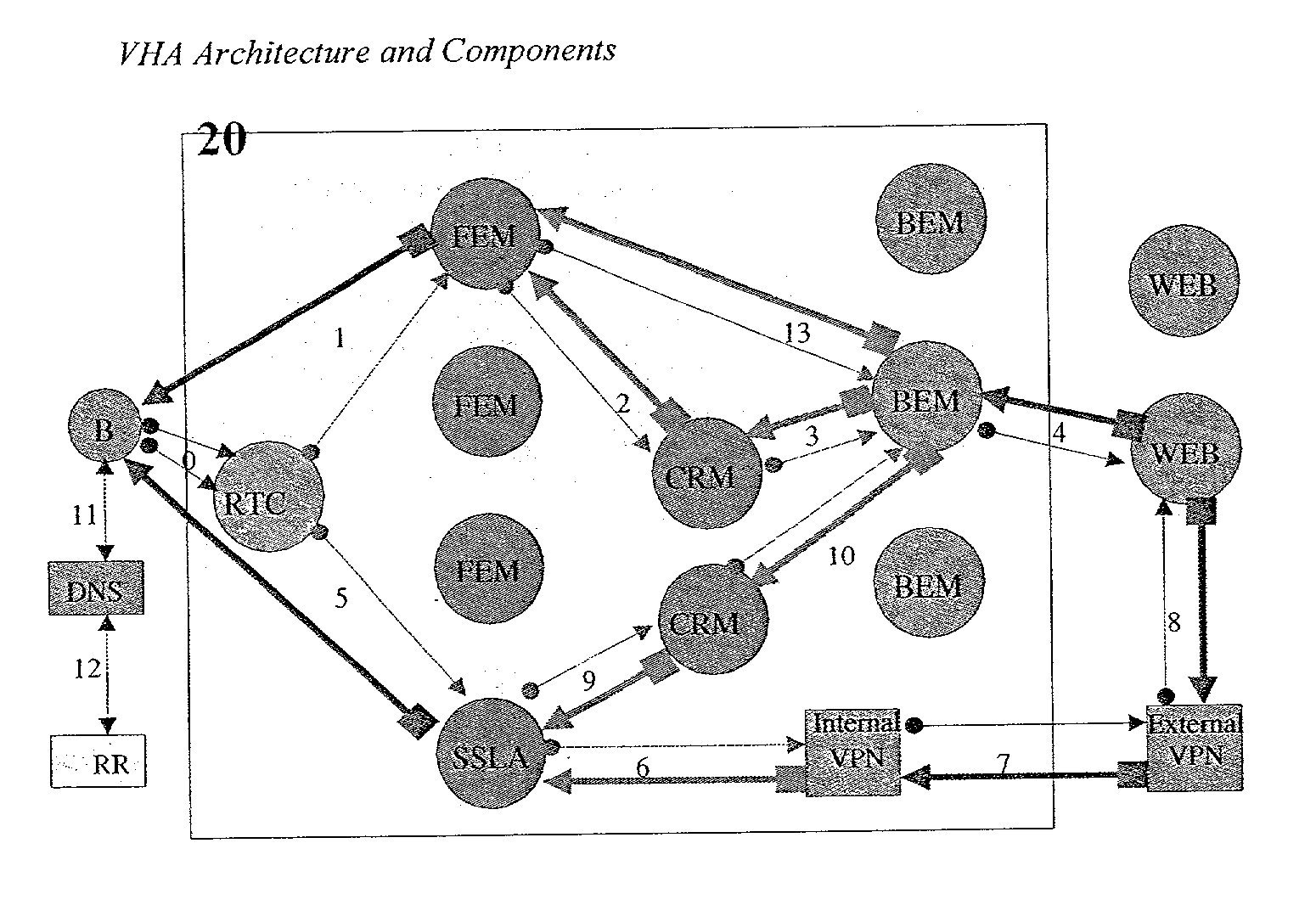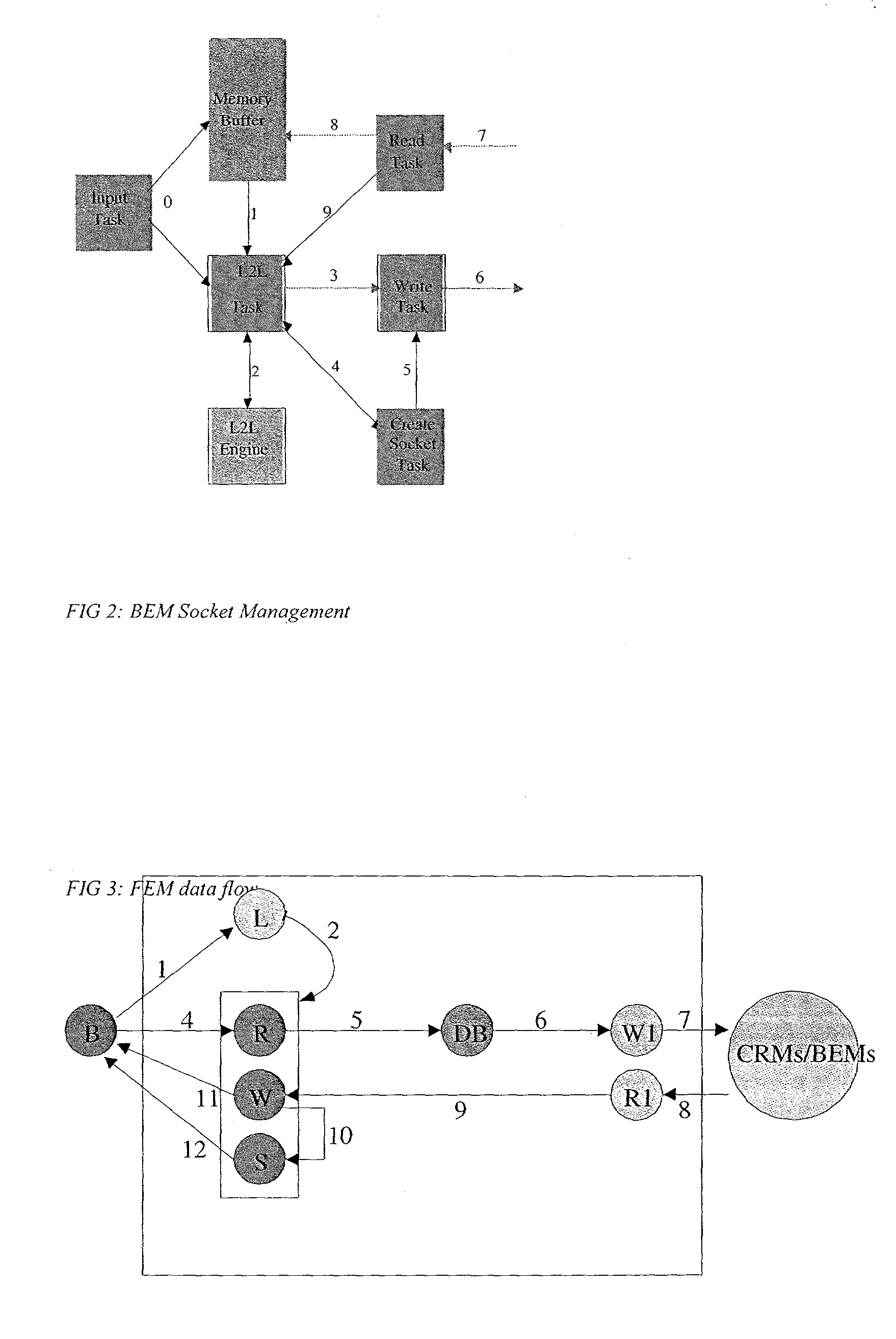Virtual host acceleration system
a virtual host and acceleration system technology, applied in the field of virtual host acceleration system, can solve the problems of affecting the performance of the client, the server, the entire data transfer process in general, and the bandwidth-intensive step, so as to achieve the effect of improving performan
- Summary
- Abstract
- Description
- Claims
- Application Information
AI Technical Summary
Benefits of technology
Problems solved by technology
Method used
Image
Examples
Embodiment Construction
[0120] Referring now to the drawings, FIG. 1 illustrates the components of the present invention. The box 20 illustrates the VHA system, which is a combination of routing and recycling equipment. The VHA system is located at strategic places on the Internet, such as ISP backbones, etc. The function of the VHA system is to create a buffer in order to deflect and protect Web servers and to accelerate WEB performance. The VHA Site accomplishes these functions by intercepting the flow of a data request from client browser software B to a WEB Site (WEB), and its subsequent processing by the VHA Site's powerful content recycling process.
[0121] Several internal and external components currently comprise the VHA System.
[0122] External Components
[0123] The following components are considered external to the actual VHA Site, but are either necessary VHA System components or relate to the functioning thereof:
[0124] i. The Client Browser and Browser Software (Referred to as B in FIG. 1).
[0125] ...
PUM
 Login to View More
Login to View More Abstract
Description
Claims
Application Information
 Login to View More
Login to View More - R&D
- Intellectual Property
- Life Sciences
- Materials
- Tech Scout
- Unparalleled Data Quality
- Higher Quality Content
- 60% Fewer Hallucinations
Browse by: Latest US Patents, China's latest patents, Technical Efficacy Thesaurus, Application Domain, Technology Topic, Popular Technical Reports.
© 2025 PatSnap. All rights reserved.Legal|Privacy policy|Modern Slavery Act Transparency Statement|Sitemap|About US| Contact US: help@patsnap.com



